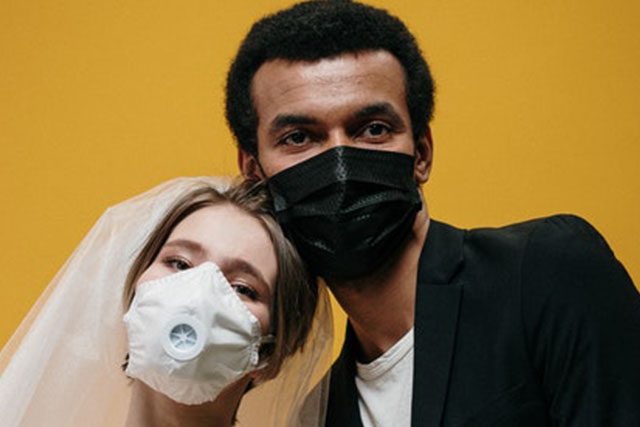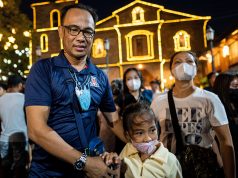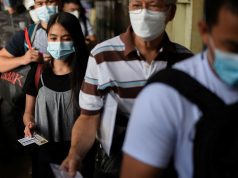Face masks with exhalation valves are being discouraged by the local medical community in an intensified bid to reduce the transmission of the COVID-19 amid reports that airborne transmission is possible in “closed settings.”
The Medical City Clinic in its Facebook page advised patients, doctors and its staff against wearing face masks with valves as it does “not block transmission of COVID-19” since it allows exhaled air and respiratory droplets to “escape.”
“We value your safety and the well-being of our patients, clinic staff and doctors. Starting today, all locations of The Medical City Clinic will not allow patients and companions wearing masks with valves to enter clinic premises,” its advisory posted on Thursday said.
The page said that it will only admit in its facilities people who are wearing medical or surgical masks, N95 masks and cloth masks.
Those who are wearing valve type face masks will be denied.
While masks with valves are designed to ease exhalation and decrease humidity for the wearer, they do not block…
Posted by The Medical City Clinic on Wednesday, July 15, 2020
Dr. Gia Sison, a physician specializing in occupational medicine, similarly shared a Makati Medical Center advisory on wearing of face masks with valves. She is also the head of MMC’s Women’s Wellness Center.
“Masks with valves are NOT advised. Please be guided,” she wrote on Twitter.
The advisory, which is not available on MMC’s Facebook and Twitter pages, cites the United States’ Center for Disease Control and Prevention (CDC) which states that respirators or masks with exhalation valve “allows unfiltered exhaled air to escape when breathed out.”
“Any person who is in close contact with someone who has respiratory symptoms is at risk of being exposed to potentially infective respiratory droplets. To protect the safety of patients, staff and visitors, masks with exhalation valves/vents are not allowed in the hospital in the context of the COVID-19 pandemic,” it said.
People who arrive wearing masks with exhalation valves would be asked to exchange it for a surgical mask.
Masks with valves are NOT advised. Please be guided. pic.twitter.com/SnyyQrnazO
— Dr. Gia Sison (@giasison) July 17, 2020
CDC said that the valve in face masks “reduces exhalation resistance,” as quoted by ABS-CBN-owned lifestyle website ANCX.
It makes exhaling easier for the wearer and it allows them to keep their face “cooler and reduces moisture build up inside the facepiece,” the website added.
The article cited a study published by the National Library of Medicine that indicates “N95 filtering facepiece respirators may not achieve the expected protection level against bacteria and viruses.”
“An exhalation valve on the N95 respirator does not affect the respiratory protection; it appears to be an appropriate alternative to reduce the breathing resistance,” the study said.
ANCX also quoted 3M, a well-known manufacturer of face masks, that issued a bulletin about face masks with valves. It reads:
“The purpose of a respirator’s exhalation valve is to reduce the breathing resistance during exhalation; it does not impact a respirator’s ability to provide respiratory protection.”
“The valve is designed to open during exhalation to allow exhaled air to exit the respirator and then close tightly during inhalation, so inhaled air is not permitted to enter the respirator through the valve.”
“While a valve does not change a respirator’s ability to help reduce a wearer’s exposure to bioaerosols (airborne particles originating from biological sources such as animals, plants, fungi, bacteria, protozoa, and viruses), a person who is exhibiting symptoms of illness should not wear a valved respirator, because exhaled particles may leave the respirator via the valve and enter the surrounding environment, potentially exposing other people.”
Last week, the Department of Health concurred with the World Health Organization which noted that COVID-19 can be transmitted through the air in hospitals and in other closed settings as aerosols or fine particles.
DOH Undersecretary Maria Rosario Vergeire cited medical procedures being done to infected patients which involve aerosol producing equipment as an example.
She added that airborne transmission can also happen in other “closed settings” or in confined indoor spaces.
“Kaya nga tayo ay nagkakaroon ng rekomendasyon na sana kung magkakaroon ng pagbubukas ng ibang sektor katulad ng mga restaurants, it should be in open air para po hindi tayo nagkakaroon ng mga ganitong instances,” Vergeire said.
Dr. Daniel Diekema, an infectious disease physician and epidemiologist at the University of Iowa, notes that COVID-19 could be transmitted through the air in a particular instance.
“Where there’s poor ventilation, indoors, and a crowded environment, there is a risk for transmission among individuals, even if they may be more than 6 feet apart,” he said to Vox.










